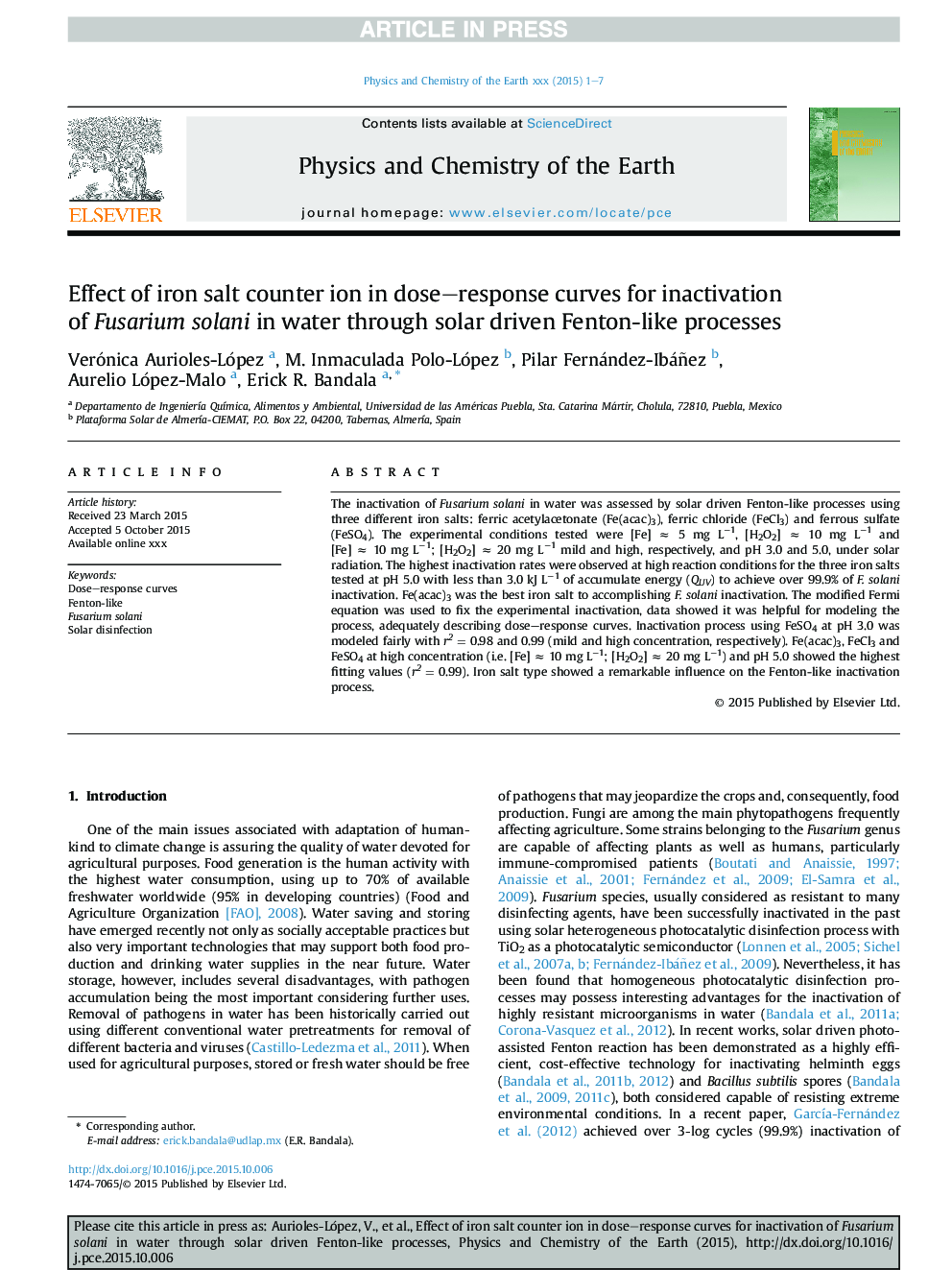| Article ID | Journal | Published Year | Pages | File Type |
|---|---|---|---|---|
| 6441926 | Physics and Chemistry of the Earth, Parts A/B/C | 2016 | 7 Pages |
Abstract
The inactivation of Fusarium solani in water was assessed by solar driven Fenton-like processes using three different iron salts: ferric acetylacetonate (Fe(acac)3), ferric chloride (FeCl3) and ferrous sulfate (FeSO4). The experimental conditions tested were [Fe] â 5 mg Lâ1, [H2O2] â 10 mg Lâ1 and [Fe] â 10 mg Lâ1; [H2O2] â 20 mg Lâ1 mild and high, respectively, and pH 3.0 and 5.0, under solar radiation. The highest inactivation rates were observed at high reaction conditions for the three iron salts tested at pH 5.0 with less than 3.0 kJ Lâ1 of accumulate energy (QUV) to achieve over 99.9% of F. solani inactivation. Fe(acac)3 was the best iron salt to accomplishing F. solani inactivation. The modified Fermi equation was used to fix the experimental inactivation, data showed it was helpful for modeling the process, adequately describing dose-response curves. Inactivation process using FeSO4 at pH 3.0 was modeled fairly with r2 = 0.98 and 0.99 (mild and high concentration, respectively). Fe(acac)3, FeCl3 and FeSO4 at high concentration (i.e. [Fe] â 10 mg Lâ1; [H2O2] â 20 mg Lâ1) and pH 5.0 showed the highest fitting values (r2 = 0.99). Iron salt type showed a remarkable influence on the Fenton-like inactivation process.
Related Topics
Physical Sciences and Engineering
Earth and Planetary Sciences
Geochemistry and Petrology
Authors
Verónica Aurioles-López, M. Inmaculada Polo-López, Pilar Fernández-Ibáñez, Aurelio López-Malo, Erick R. Bandala,
